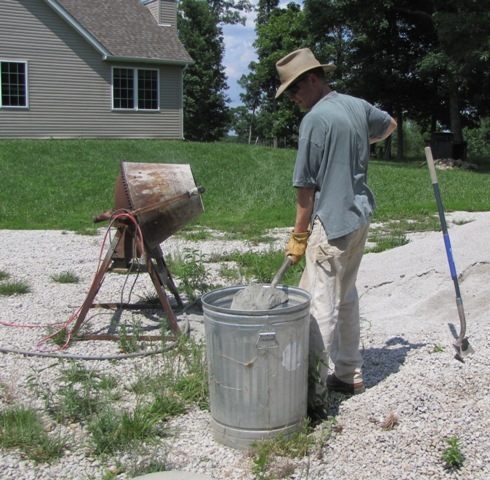Step four, continued: Setting the posts.
This picture shows the purpose of all those strings and poles in the earlier posts; they're there to make sure all the support posts line up perfectly. This picture also help to show how all the time spent earlier paid off now, as this post lined up perfectly. (They all did, thank goodness!)
This picture shows the bright red color of freshly cut heart cedar. It smells awesome too! Sadly, the wood turns brown after being exposed to the sun for a few hours. (Sharp-eyed viewers will notice that the string does not line up with the post. That's because I was leaning against it while taking the picture.)
Step 5: Framing the deck.
For a while on Saturday I had a helper. Our neighbors came over to use our chicken processing equipment to butcher some chickens for their family. The neighbor's dad wandered up to see what I was working on and ended up lending a helping hand during a break in the chicken operation. It was nice having some help lifting those 2x12 ledger boards! He ended up staying even after the chicken processing was done, and finally called it a day when it started raining around 3pm. In this picture the perimeter is complete and we are starting to hang the interior joists.
After the rain stopped the sun came back out, so I went back to work, solo. I couldn't resist laying down a few deck boards just to get the feel of the thing, even though I wasn't ready to screw them down yet.
In this picture you can see the rubber waterproofing membrane installed on top of some of the joists. It's purpose is to prevent the joists from rotting due to water sitting on them. It's cheap insurance and should extend the life of the deck for many years. At the top right of the picture you might notice that there are two more center posts to be installed. In the bottom of the picture you can see that I've started screwing down some of the deck boards. Here's a little math: 30 screws per deck board times 82 deck boards equals 2,460 screws that need to be driven into the top of this deck. Yikes.

























